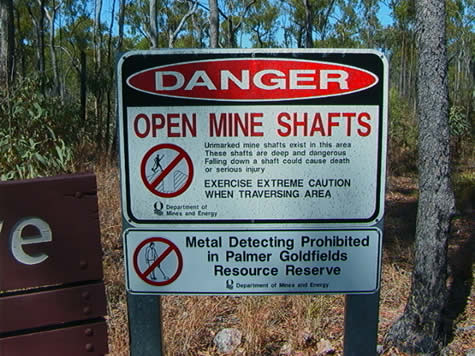The process of extracting gold from the Palmer River gold fields of the 1870s was no easy task. As much as twelve tons of machinery was needed to extract the ore from the rocks in each location.

Sites selected for the machinery were on the reefs where the greatest amount of work was being done. Miners’ accounts recall, “The two principal mines are the Ida and the Queen of the North. They are by the employment of labor quite capable to give full employment to two machines now in transit.”
The road from Cooktown to Maytown was 150 miles of the roughest country in the north. Often, machinery had to be dismantled to be lowered and raised by block and tackle over the rough terrain. It cost more than 800 pounds to bring the first ore crushing machinery from Cooktown to the Palmer.
Depths in mines could reach 120 feet to extract the ore. The greatest average thickness was about two feet carrying gold throughout. The best blocks of stone were obtained from the deepest levels.
The arrival of Messrs Edwards and Co’s machine caused great excitement among the miners. It was a ten stamper, six hundred weight, driven by a twelve horsepower engine and capable of averaging ninety tons a week. It was installed on the banks of the Palmer River. Crushing batteries were erected on the bank of a river whenever possible, as a good supply of water was essential for the crushing of ore. Huge bed logs were needed for the battery and the steam engine that drove it. Trees were felled, then floated down river, guided by strong swimmers to keep them clear of debris.
As the Wet season approached, the lack of feed for teams used to cart the ore to the stampers became a problem. Animals died due to starvation. The machines were ready to begin crushing in December. There were more than sixteen hundred tons of ore waiting to be treated.
Despite the hardships, enthusiasm ran rampant. Around Maytown, rich quartz specimens were being shown around. Early results had fulfilled expectations. From the Queen of the North, 110 tons of quartz had returned 915 ounces of smelted gold, a little over eight ounces ore per ton. The Maytown reefs were about to come into their own!
Suggested activities: Research mining techniques, past and present, in your area. Determine how machinery plays a role in the extraction of the ore in the mining process.